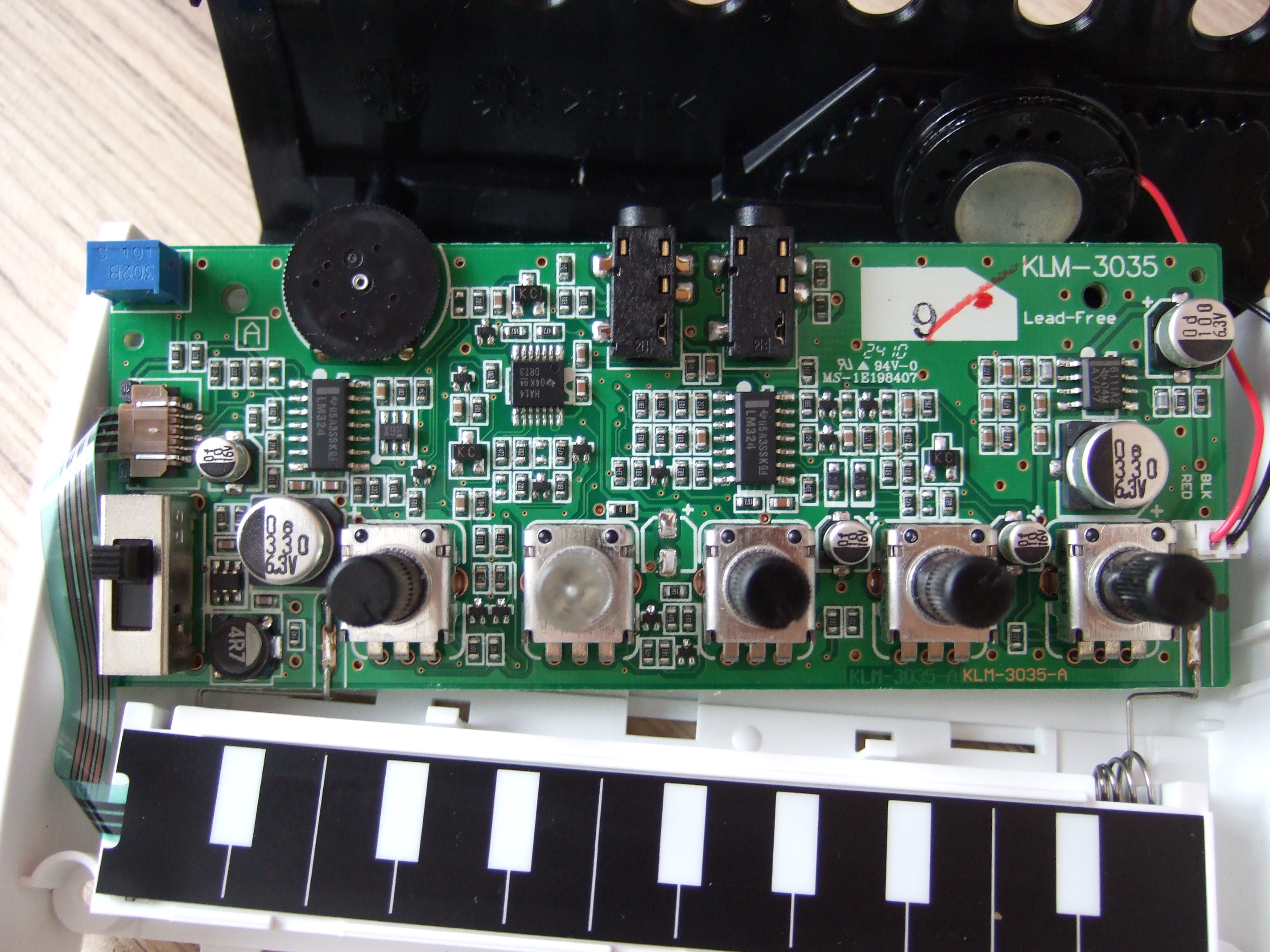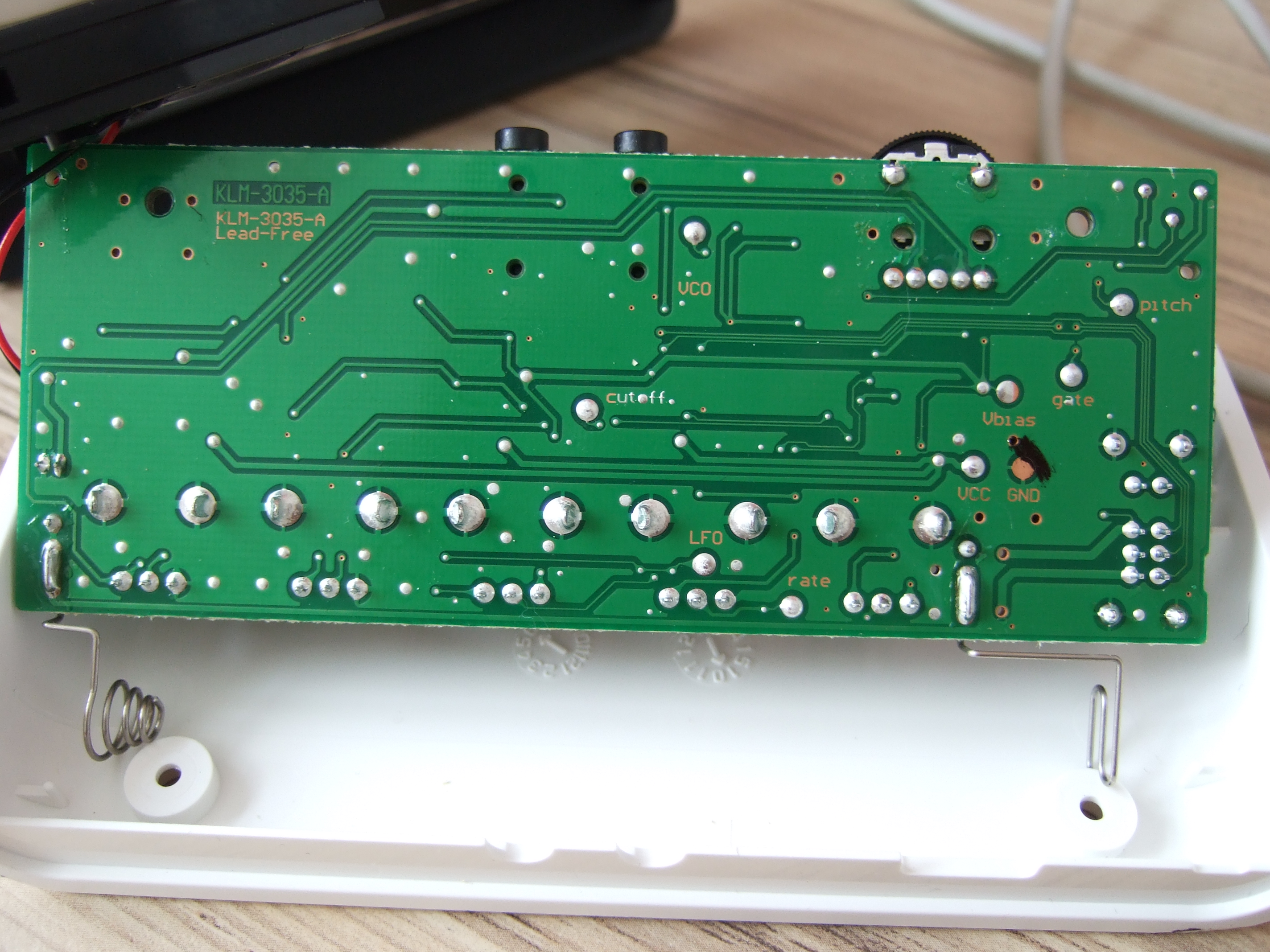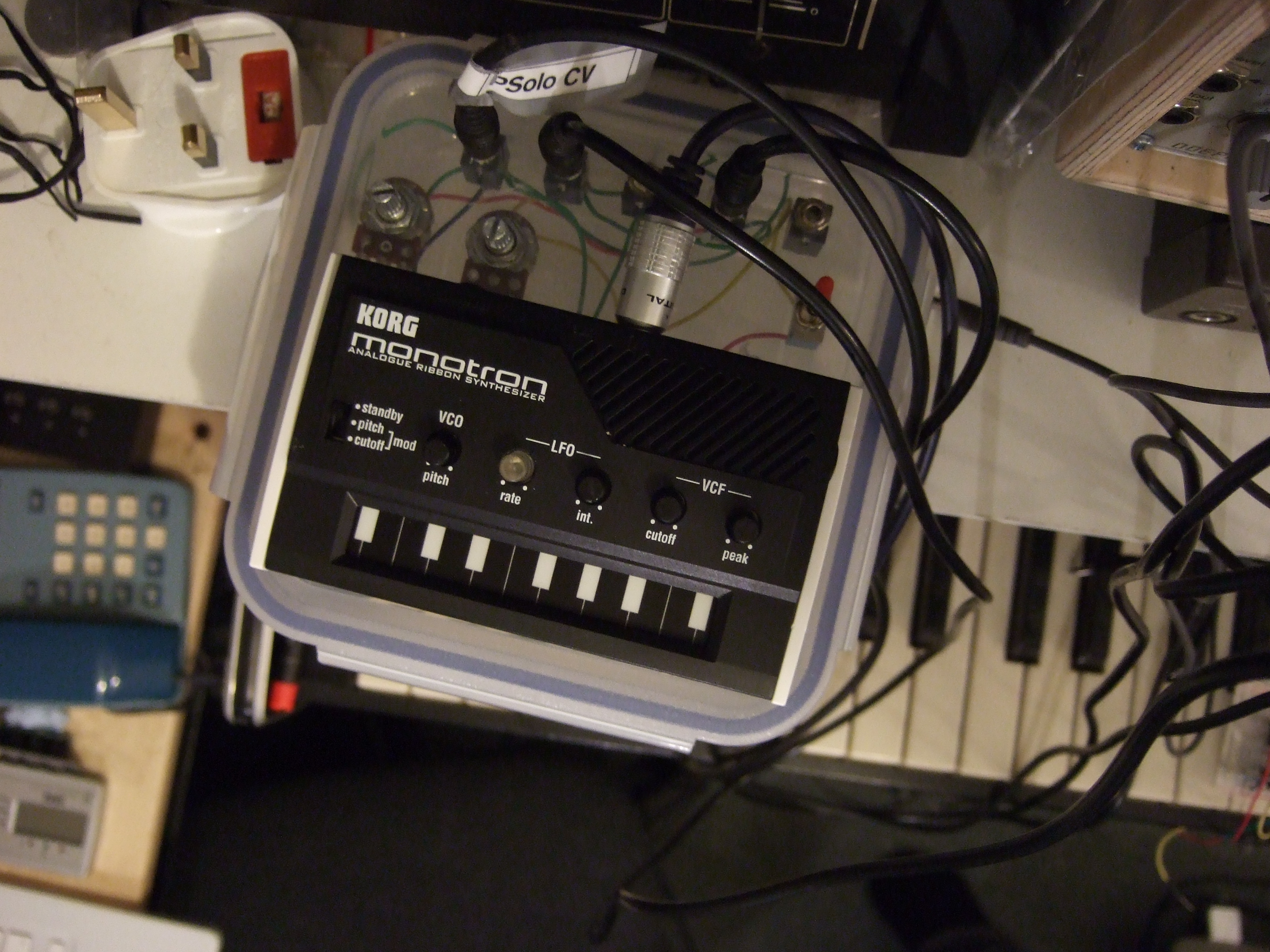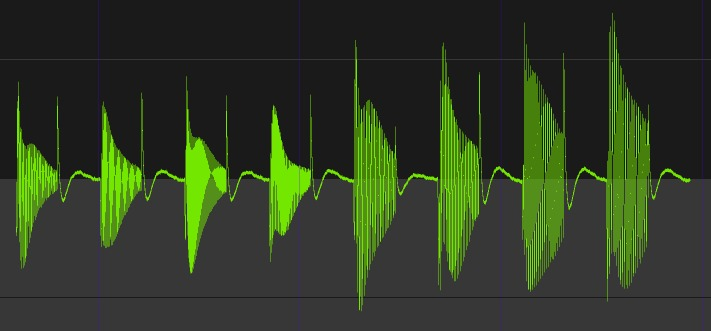Korg Monotron hacking
IT SOUNDS GREAT.
Sorry for shouting, but it’s really good fun. Like every other synth freak out there I got bought one of these for Christmas. I’ve had it next to my MS20, and the filter sounds really similar to the low-pass in the older synth.
Here’s a picture round the back of the Monotron, see how the patch points have been clearly annotated by Korg.
Lots of people have already tried to mod their Monotrons…
Dinsync has written up lots of notes on hacking in cv and gate inputs.
Korg have released the schematics for the Monotron.
Rude66 is offering to build the Dinsync mods into your Monotron over at www.monotronmods.com.
Beatnic has gone all out on the Monotron++, adding a square wave and control of the pulse width to the oscillator, a switch for converting the LFO into a single shot EG, and MIDI and cv/gate inputs.
There’s another suggested MIDI interface over at fengland.org, which includes an arpeggiator, which is always good.
I think it’s masa921 that put together this impressive 8-step sequencer for the Monotron, sadly the site with the schematic has gone, though I’m guessing it’s something similar to the Baby 10 sequencer. denha also demonstrates a two octave mod and the Beatnic LFO as EG mod – although I can’t find the details for that one – now found this, which uses an LED to clip the LFO at houshu.at.webry.info, and Scott Willingham pointed out the Beatnic/masa921 version of the mod on the original Monotron+ page.
Some people over at Muffwiggler are looking at making the Monotron into a Eurorack module. Tim Stinchcombe has heroically put together a handy annotated photo of the circuit board with the component values overlaid.
This whole post is going to look bad if I’ve not had a go, so – here’s my hack so far, built into a small lunchbox:
Going off all the stuff on Din Sync’s blogpost and the Muffwiggler thread, I got something working, which is the thing above. This bit is always quite exciting. People in internet-land say these things are possible, but actually having the thing sequenced by my CSQ-100 and squeaking away in 4 octaves-or-so on my desk was great. This doesn’t terribly well tuned in, but here’s an example:
This is what I’ve done so far – bear in mind I’m reasonably clueless at this electronics stuff:
- drilled a single hole in the base of the Monotron to feed all the wires out into my sandwich box
- wired CV output from sequencer to “pitch” point, with a 33K resistor and 10K multi-turn trimmer in series
- wired gate output from sequencer to “gate” point, with a large-ish resistor and a 100K pot in series – this is (hopefully) to limit the gate voltage going into the Monotron, which could be up to +15v, although I’d probably be better off with a voltage clamp using a pair of diodes
- wired filter CV from external sources to “filter” point, with 200K resistor in series with a 10K pot, which has a resistor across it to make it into more like a 2.5K pot to make the range useful
- removed R11 with a soldering iron and a knife to stop the gate voltage affecting the pitch. This does rather bugger the keyboard ribbon, so attached a switch across the pads of R11 with a 1K resistor in series to replace R11
- added a switch between the gate output pot wiper and the “gate” point. This seems to give a gate-on forever effect, although it also stops retriggering the LFO (could possibly change this for an on-on switch and wire the other point to the LFO reset area, maybe between R24 and R30? – update 10/1/2011: I had a fiddle with this here – LFO reset on Korg Monotron)
Lovely though it is, there’s a couple of problems. Although you can’t really tell from the onboard speaker, it’s quite hissy. This has been covered on the brilliant Muffwiggler thread, with Scott Willingham replacing the filter output op amp (an LM324) with an OP462, which brought the noise down. Because it’s all surface-mounted, I’m not sure if I’d fancy this. There’s a post on the Unofficial Monotron Forum which shows a possible place to take a line out, I’ve not tried this, but there’s some doubts as to whether this will make much of a difference.
The other problem is the massive click after every gate ends, here’s a really short example to illustrate this:
…and here’s the waveform, look at the state of those clicks after every note.
16 Comments



